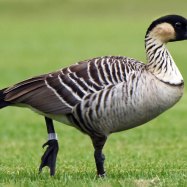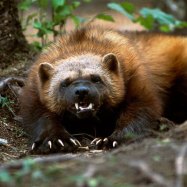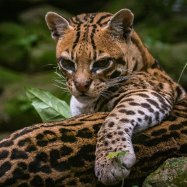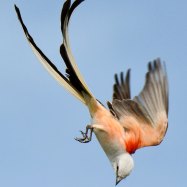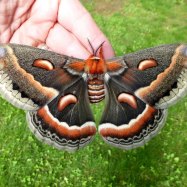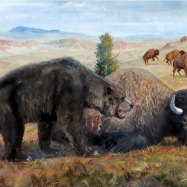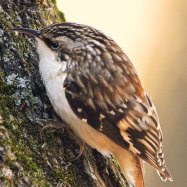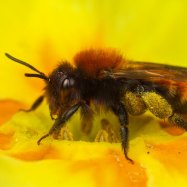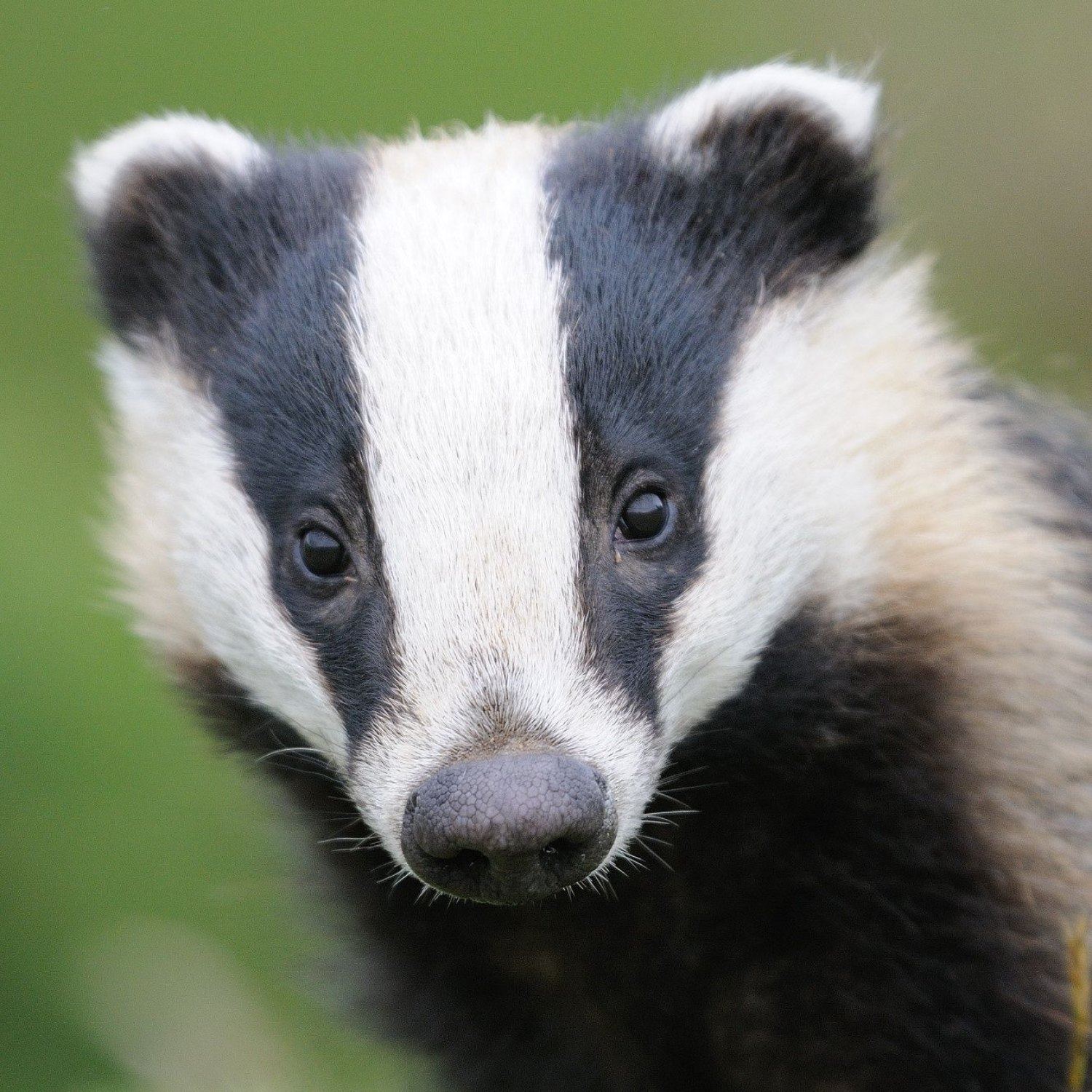
Badger
60 to 90 cm
Discover the fascinating world of badgers, native to Eurasia! These mustelids have a stocky and low-to-the-ground body shape, growing up to 60-90 cm in length. Uncover the secrets of these elusive animals in their natural habitat, and find out why they're an important part of the ecosystem. #Badger #Animals #Eurasia
Animal Details Summary:
Common Name: Badger
Kingdom: Animalia
Habitat: Woodlands, grasslands, and scrublands
The Hardy Badger: A Fierce Yet Fascinating Creature
Nestled deep within the dense woodlands, grasslands, and scrublands of Eurasia, a resilient creature roams, largely unnoticed by passersby. With its iconic black and white stripes and fierce reputation, the badger is a formidable member of the animal kingdom. However, there is much more to these elusive creatures than meets the eye. From their astounding adaptability to their unique social behavior, the badger is a fascinating creature that deserves more recognition and understanding Badger. In this article, we will delve into the life and characteristics of the mighty badger, highlighting its unique features that make it truly one of a kind.An Introduction to the Badger
Scientifically known as Meles meles, the badger is a member of the Animalia kingdom and the Mustelidae family, within the Carnivora order. Its common name, badger, originated from the French word "becheur," meaning "digger." This is fitting as badgers are known for their incredible digging abilities, using their strong claws and muscular bodies to create extensive underground burrows. These burrows, also known as setts, are usually elaborate tunnel systems with multiple entrances, making them a secure home for badgers and their young.Habitat and Distribution
The badger's ability to thrive in a variety of habitats is truly astonishing. They are found in woodlands, grasslands, and scrublands all across Eurasia, with their geographical distribution spanning from Europe and parts of Asia to even parts of Africa. However, their country of origin is generally considered to be the United Kingdom, where they are one of the iconic symbols of the British countryside. Despite their elusive nature, badgers can adapt well to suburban areas and can even be found in urban spaces, making them a versatile and resilient species Bat.Appearance and Adaptations
Badgers are known for their stocky and low-to-the-ground body shape, making them quite distinct from other members of the Mustelidae family. Their long and coarse fur is primarily black with distinct white stripes running down their backs, making them easily recognizable. This unique coloration also serves as a form of camouflage, allowing them to blend into their surroundings as they move about at night.One of the most impressive features of the badger is its powerful front claws, which make digging through hard earth a seemingly effortless task. However, these claws also play a vital role in their feeding habits, as badgers are omnivorous creatures. They have a varied diet, including small mammals, insects, fruits, and nuts, all of which they can easily gather with their adept digging skills. This adaptability in their diet contributes to their ability to survive and thrive in various habitats.
Social Behavior
Badgers may have a reputation for being aggressive animals, but in reality, they are highly social creatures that live in groups known as cete. A cete can have anywhere from 2 to 15 members, but typically consists of a mating pair and their offspring. The cete has a strict hierarchy, with the dominant male and female being the leaders and the rest of the members playing supporting roles.What is truly remarkable about badgers is their strong sense of community and cooperation. They work together to maintain their setts, take care of their young, and even share food. This social behavior sets them apart from many other solitary animals and showcases a level of complexity and intelligence within their family structures.
The Importance of Badgers in their Ecosystem
Despite their somewhat fearsome appearance, badgers play an essential role in maintaining the balance of their ecosystems. As omnivores, they have a diverse diet, making them crucial for seed dispersal and pollination. Their digging activities also help to aerate the soil, which benefits plant growth, and their burrows provide shelter for various small mammals, insects, and even reptiles. Therefore, badgers are considered a keystone species, and their presence in an ecosystem is essential for its overall health and stability.Conservation Status
Unfortunately, like many other animal species, badgers are facing threats to their survival. Human activities such as urban development, road construction, and hunting pose significant risks to their habitats and populations. In some countries, badgers are also considered pests and are routinely culled, despite their protected status in many others.Fortunately, efforts are being made to conserve and protect badgers and their natural habitats. In the UK, badgers are protected by law, and conservation organizations work tirelessly to raise awareness and provide support for these animals. However, more needs to be done globally to ensure that badgers continue to exist for generations to come.
In Conclusion
In conclusion, badgers are truly remarkable creatures that have captivated the interest of humans for centuries. From their unique physical features and adaptability to their complex social behaviors and importance in their ecosystems, badgers are much more than just fierce carnivores. They are intelligent, resilient, and integral to the balance of their environments. As we continue to learn more about these mighty animals and work towards their conservation, we can appreciate the beauty and significance of the humble badger. So, the next time you come across one of these elusive creatures, remember to admire from a safe distance and appreciate the vital role they play in our natural world.

Badger
Animal Details Badger - Scientific Name: Meles meles
- Category: Animals B
- Scientific Name: Meles meles
- Common Name: Badger
- Kingdom: Animalia
- Phylum: Chordata
- Class: Mammalia
- Order: Carnivora
- Family: Mustelidae
- Habitat: Woodlands, grasslands, and scrublands
- Feeding Method: Omnivorous
- Geographical Distribution: Europe, Asia, and parts of Africa
- Country of Origin: United Kingdom
- Location: Eurasia
- Animal Coloration: Black and white
- Body Shape: Stocky and low to the ground
- Length: 60 to 90 cm
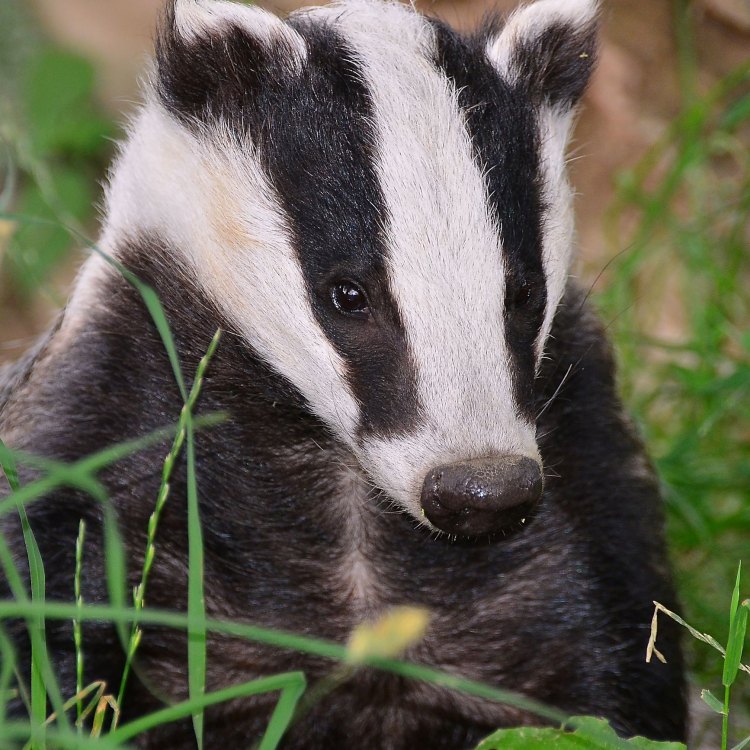
Badger
- Adult Size: Medium-sized
- Average Lifespan: 10 to 14 years
- Reproduction: Sexual
- Reproductive Behavior: Polygamous
- Sound or Call: Barking, growling, snorting
- Migration Pattern: Non-migratory
- Social Groups: Solitary or small family groups
- Behavior: Nocturnal
- Threats: Habitat loss and fragmentation, road accidents, persecution
- Conservation Status: Least Concern
- Impact on Ecosystem: Excavate burrows and create habitats for other species
- Human Use: Hunting for sport and fur, badger culling
- Distinctive Features: White stripe on the face and body
- Interesting Facts: Badgers are known for their digging abilities and their distinctive black and white face markings. They are also one of the few mammals that can eat both plant material and small animals.
- Predator: Wolves, foxes, and large birds of prey
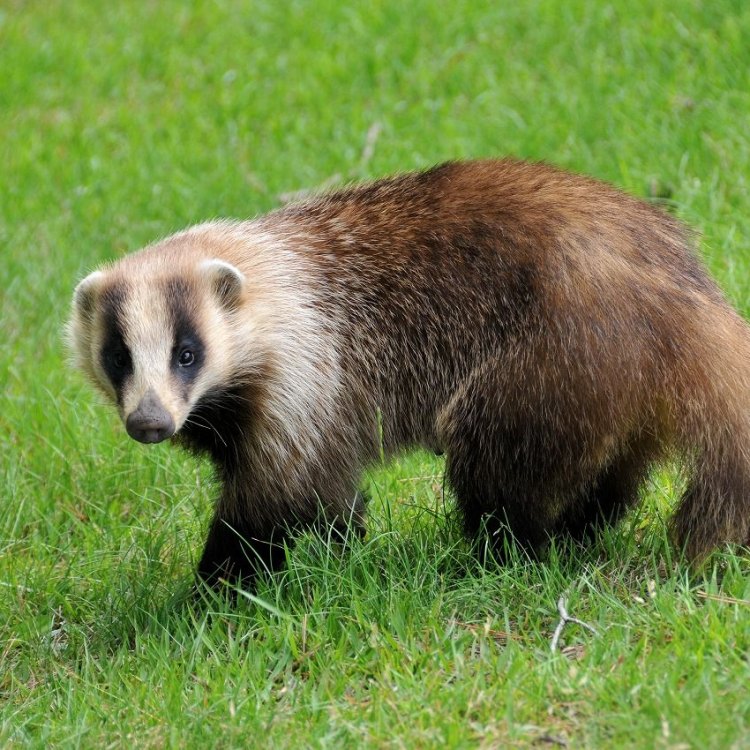
Meles meles
The Fascinating World of Badgers
The badger is a fascinating and often misunderstood animal. Upon hearing the name, many people may conjure up images of a fierce and dangerous creature, but this is far from the truth. Badgers are medium-sized mammals that belong to the Mustelidae family, which also includes otters, weasels, and ferrets. They are perhaps best known for their distinctive black and white face markings and their impressive digging abilities PeaceOfAnimals.Com.In this article, we will delve deep into the world of badgers, exploring their size and lifespan, reproductive behaviors, threats they face, and their impact on the ecosystem. We will also discuss the human use of badgers and some interesting facts about this enigmatic animal.
The Size and Lifespan of a Badger
Badgers are medium-sized animals, with the largest species, the European badger, measuring up to 35 inches in length and weighing around 25 pounds. Other species, such as the American badger, are slightly smaller with an average length of 30 inches and a weight of 19 pounds. Despite their relatively small size, badgers have a robust and compact body that allows them to dig through the ground with ease.In terms of lifespan, badgers have an average lifespan of 10 to 14 years in the wild. However, some individuals in captivity have been known to live up to 15 years. The exact lifespan of a badger can vary depending on factors such as habitat, diet, and predation.
Reproduction and Social Behavior
Badgers have a sexually reproductive behavior and typically mate from late summer to early fall Biscuit Beetle. Males will compete for female attention by engaging in battles with other males, often resulting in injuries. Once the female has chosen a mate, she will begin to prepare her den for the upcoming litter.Badgers are polygamous animals, meaning that a male may mate with several females during the breeding season. Females give birth to litters of 3-4 cubs, known as kits, after a gestation period of 6-9 weeks. The kits are born blind and hairless and are completely dependent on their mothers for the first few months of their lives.
In terms of social behavior, badgers are primarily solitary animals, except during the breeding season. However, they may also form small family groups consisting of a female and her offspring. These groups will typically stay together for a year or two before the young disperse to live on their own.
Nocturnal Creatures with Unique Sounds
One of the most intriguing characteristics of badgers is their nocturnal behavior. They are mainly active at night, spending their days sleeping in their underground burrows. This is a survival tactic that allows them to avoid predators and conserve energy.When badgers do emerge at night, they are not known for being vocal animals. However, they do have a range of sounds they use for communication, including barking, growling, and snorting. These sounds are often used as warning signals to other badgers or to scare off potential threats.
The Threats Badgers Face
Despite their strong and resilient nature, badgers face many threats in their natural habitats. One of the most significant threats to badgers is habitat loss and fragmentation. As human population and development expand, badgers lose their natural habitats and food sources.Another significant threat to badgers is road accidents. Badgers often travel long distances at night in search of food, making them vulnerable to collisions with vehicles. As a result, road accidents are one of the most common causes of death for badgers in some regions.
Badgers also face persecution from humans, primarily in the form of hunting for sport and their fur. In some parts of the world, badger culling is also used as a means of controlling their population. These practices have significant impacts on badger populations and can also disrupt their reproductive behaviors.
Conservation Status and Impact on the Ecosystem
Currently, the conservation status of badgers is classified as "Least Concern" by the International Union for Conservation of Nature (IUCN). This means that badgers are not currently facing any significant threats to their survival. However, this does not mean that their populations are not at risk.Badgers play an essential role in the ecosystem, as they are considered ecosystem engineers. Their digging abilities allow them to excavate burrows that serve as habitats for other species. These burrows also help to aerate and enrich the soil, making them essential for maintaining the health of the ecosystem. Additionally, badgers also contribute to seed dispersal and pest control, further highlighting the crucial role they play in their ecosystems.
The Human Use of Badgers
Sadly, badgers have also been used by humans for various activities. Historically, badgers were hunted for their fur, which was used to make garments. Today, while hunting for badgers is largely prohibited, their fur is still used in some areas for fashion purposes.Additionally, badgers are often killed by farmers who see them as a threat to their livestock. This is mainly due to the false belief that badgers are carriers of diseases and parasites that can infect livestock, such as bovine tuberculosis. However, studies have shown that there is very little evidence to support this claim.
Interesting Facts about Badgers
- Badgers are one of the few mammals that can eat both plant material and small animals. This is known as an omnivorous diet.- Badgers are named after the French word "becheur," meaning digger.
- The white stripe on a badger's face and body is unique to each individual, similar to a human fingerprint.
- Badgers are excellent swimmers and can hold their breath for up to 5 minutes.
- In Norse mythology, badgers are believed to be messengers between the gods and humans.
- In traditional medicine, badger fat has been used to treat various ailments, including coughs and skin conditions.
Predators of Badgers
Despite their tough exterior, badgers have natural predators in the wild. Wolves, foxes, and large birds of prey, such as eagles and owls, are all known to hunt and prey on badgers. However, badgers have a few defense mechanisms to protect themselves. Their sharp claws and powerful bite can fend off attacks from predators, and they are also skilled at escaping into their extensive underground burrow systems if needed.In Conclusion
The badger is a remarkable animal that has been around for millions of years. Though they may seem elusive and mysterious, they play a vital role in maintaining the health of their ecosystems. Unfortunately, they face many threats and are often misunderstood by humans. It is crucial for us to understand and respect these fascinating animals to ensure their long-term survival in the wild. By learning more about badgers and appreciating their unique features and behaviors, we can truly appreciate how they contribute to the world around us.
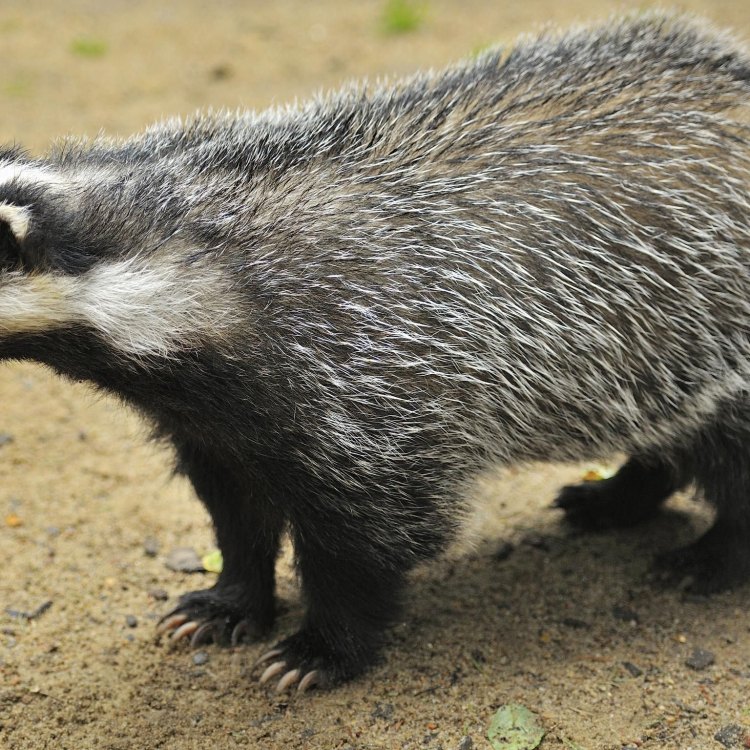
The Hardy Badger: A Fierce Yet Fascinating Creature
Disclaimer: The content provided is for informational purposes only. We cannot guarantee the accuracy of the information on this page 100%. All information provided here may change without prior notice.

